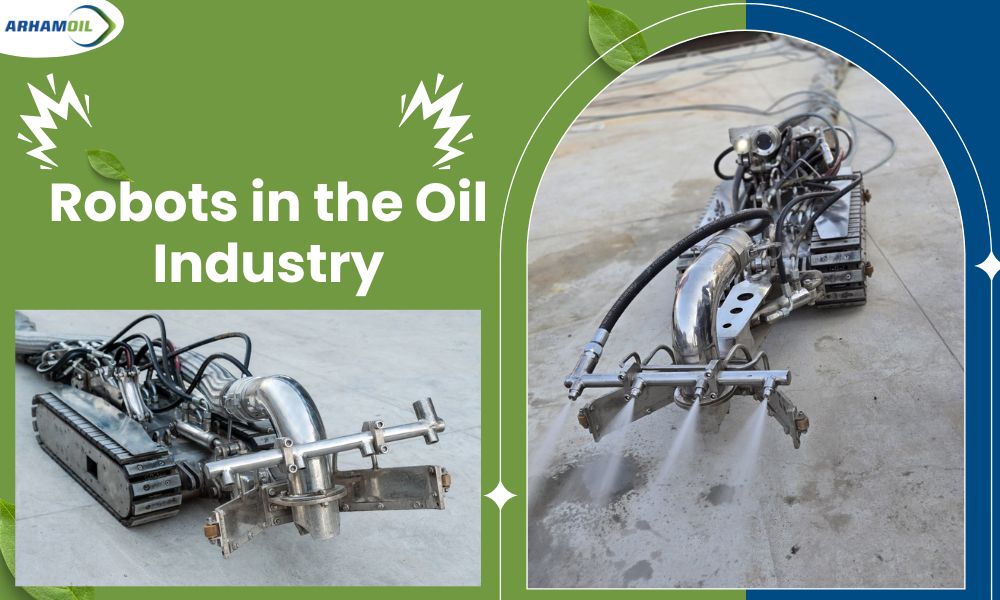Remote Operations: Managing Oil Tank Cleaning Projects Without Being On-Site
May 21, 2025What is Oil Skimming? And the Benefits of Oil Skimming
June 18, 2025Introduction: The High Cost of Human Risk
In 2024, a refinery worker in India lost their life while cleaning a crude oil storage tank. Toxic fumes overwhelmed them before their team could react. Tragedies like this aren’t isolated—they’re a grim reminder of the dangers lurking in manual tank cleaning. But what if these risks could be eliminated?
We’ve pioneered robotic solutions that remove humans from hazardous environments while delivering cleaner, faster, and more reliable results. In this blog, we’ll explore why robots are no longer a “nice-to-have” but a non-negotiable safety imperative—and why partnering with us is the only way to future-proof your operations.
The Problem: Why Humans Shouldn’t Be in Tanks
Manual tank cleaning forces workers into environments that are:
- Toxic: Hydrogen sulfide, benzene, and other carcinogens linger in sludge.
- Explosive: Flammable vapors can ignite from a single spark.
- Physically Grueling: Workers shovel sludge for hours in cramped, humid conditions.
The consequences?
- Fatalities: Over 60 confined-space fatalities occur annually in the U.S. alone (OSHA).
- Costly Fines: Violations of OSHA’s Permit-Required Confined Space Standard (1910.146) average $150k per incident.
- Reputational Damage: Accidents trigger lawsuits, headlines, and investor distrust.
The Robotic Revolution: How Machines Outperform Humans
Our robots are engineered to handle tasks too dangerous for humans, with precision no crew can match. Here’s how they work:
Entering the Danger Zone
- No Human Entry: ATEX-certified robots slip through 24-inch access points.
- Real-Time Visual Monitoring with ATEX-Approved Cameras: ATEX-approved cameras provide crucial real-time visual monitoring of the operational area. These specialized cameras are designed and certified for use in potentially explosive atmospheres, ensuring they don’t become an ignition source. They allow personnel, even remotely, to visually assess the situation during an incident, verify the effectiveness of safety protocols, and guide emergency response efforts, all while maintaining the highest safety standards in hazardous environments.
Precision Cleaning
- AdaptiveJet Nozzles: Adjust water pressure (5–30 Bar) based on sludge type—stubborn paraffin gets a blast, fragile coatings get a gentle rinse.
- Vacuum Systems: Suction sludge into sealed containers, preventing spills or leaks.
4 Reasons Robots Outperform Humans
- Safety: Zero fatalities or injuries in our decade of robotic operations.
- Speed: Clean a 50-foot tank in 3 days (vs. 10+ days manually).
- Consistency: No fatigue, no shortcuts—every inch scrubbed to the same standard.
- Cost: Slash labor, insurance, and downtime costs by 40–60%.
Our Technology: Why No Competitor Comes Close
While others use off-the-shelf robots, we’ve built proprietary systems tailored to the oil industry’s toughest challenges:
SmartSludge AI™
- Problem: Sludge composition varies (paraffin, sand, water-oil emulsions).
- Solution: AI analyzes sludge in real time, auto-adjusting robot settings for optimal cleaning.
Proven Performance in Diverse Climates
Our hydraulically driven robot has proven its capabilities across India’s diverse climate, from Chennai’s humid coastal heat and Assam’s variable conditions to Delhi’s extreme summer highs. This extensive operational history in real-world environments demonstrates its robust design and resilience within a significant temperature range, providing a strong foundation for future adaptations to more extreme cold or hot conditions.
Explosion-Proof Design
- ATEX Certified: Only robots rated for Zone 0 environments (continuous explosive gas presence).
Closed-Loop Recycling
- Zero Waste: 95% of sludge is processed into biofuel or asphalt—no landfill contributions.
The Human Impact: Safer Jobs, Better Outcomes
Robots aren’t replacing workers, they’re redefining their roles:
- Operators: Monitor robots via dashboards, upskilling into tech-driven roles.
- Engineers: Focus on strategy, not shovel work.
- Managers: Meet ESG goals and investor demands with auditable sustainability metrics.
Case in Point: A Louisiana refinery retrained 20 workers as robot operators, boosting morale and retention by 70%.
Why Arham Oil is the Only Partner You Need
- Unmatched Expertise: Many tanks cleaned, 0 safety incidents.
- Versatile & Ready for Global Deployment: Our robots, currently proven in Indian refineries, are built with the adaptability to operate effectively in a wide range of global settings, including challenging environments like offshore rigs and bustling urban terminals. We’re eager to bring our expertise to new international markets.
- Transparency: Live dashboards let you track progress, costs, and CO₂ savings in real time.
- RaaS Model (Robot-as-a-Service): No upfront costs—pay per project or subscribe monthly.
Objections Addressed
- “Robots are too expensive”: Our RaaS model cuts upfront costs to zero. Savings from reduced downtime alone cover fees.
- “We’ve always done it manually”: Legacy methods put lives at risk. Modernize or face rising fines and talent shortages.
- “What if robots fail?”: 24/7 remote support and backup bots ensure 99.9% uptime.
The Future is Robotic—Don’t Get Left Behind
The question isn’t if the oil industry will adopt robotic cleaning, but when. Companies clinging to manual methods face existential risks: lawsuits, talent attrition, and regulatory shutdowns.
At Arham Oil we’re not just selling robots—we’re offering a lifeline. Our technology protects your workers, your bottom line, and your reputation.
Ready to Eliminate Human Risk?
Contact Us today and transform your tank cleaning operations—safely, efficiently, and sustainably.


